
One aspect of being based in Western Australia that local landscaping companies have to contend with is the hot, dry climate and the subsequent need to advise clients about the pros and cons of having such weather. Specifically, there will be many plants that either thrive or struggle in Western Australia’s climate and as such it is the former that landscapers will wish to focus on when selecting plants for any landscape design that has been asked for by their clients.
Another crucially important aspect of landscape gardens that professional landscapers in Western Australia will be advising clients on is how to maintain their gardens. Bear in mind, that those gardens will have long hours of sunlight, extreme heat, and negligible rainfall during the summer months, so maintaining them properly will be key to them thriving rather than struggling. Here are seven tips from the garden maintenance professionals at The Lawn Care Man based in Western Australia, to help you maintain your landscaped gardens.
Do As Much Maintenance As You Can In The Mornings
This tip is as much for your benefit as it is for your plants. Rather than expose yourself to extreme heat during the long, hot afternoons, it is better if you get an early start and do your maintenance tasks first thing in the morning when it is cooler. In addition, by watering when it is cooler, plants will benefit more as less moisture will evaporate due to temperatures being lower at that time of day.
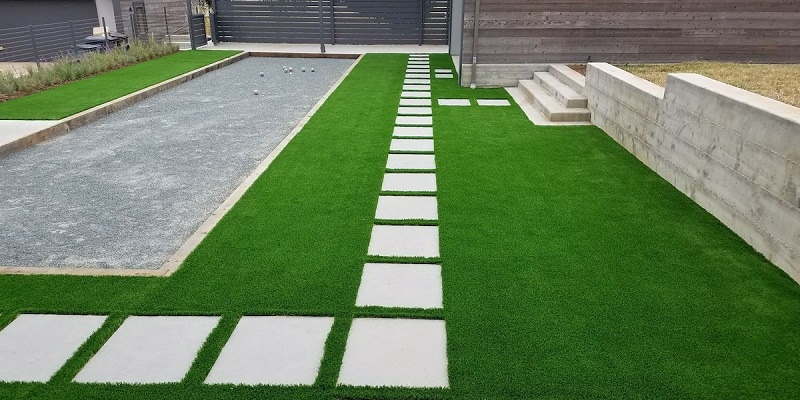
Whenever homeowners embark on a landscaping project for their garden, one of the biggest decisions they have to make involves their lawn. The decision entails deciding whether they wish to keep the lawn as it is, have a new grass lawn laid, or if they want to change everything completely and opt for an artificial lawn.
The third of those options often excites homeowners as they believe an artificial lawn means no more maintenance and that it will be completely hassle-free. Whilst an artificial lawn has many benefits, we have to dampen that misguided enthusiasm and advise that artificial lawns also have their downsides.
We are not going to dismiss artificial lawns as an option, nor are we trying to persuade you to stick with a natural lawn. However, we believe that every decision you make about your landscape design should be made with the full facts at your disposal. That is why we are going to highlight ten reasons why an artificial lawn might not be the answer. Ultimately, it is up to you to make your choice, but at least you can now do so fully informed.
Reason #1 – Low But Not No Maintenance: The myth that artificial turf requires no maintenance has to be exposed. Whilst it certainly requires less maintenance than natural grass, such as no lawn mowing or weeding, it still needs to be looked after if it is going to last an acceptable length of time. Examples include clearing it of leaves and debris, plus raking it occasionally can keep it looking good.
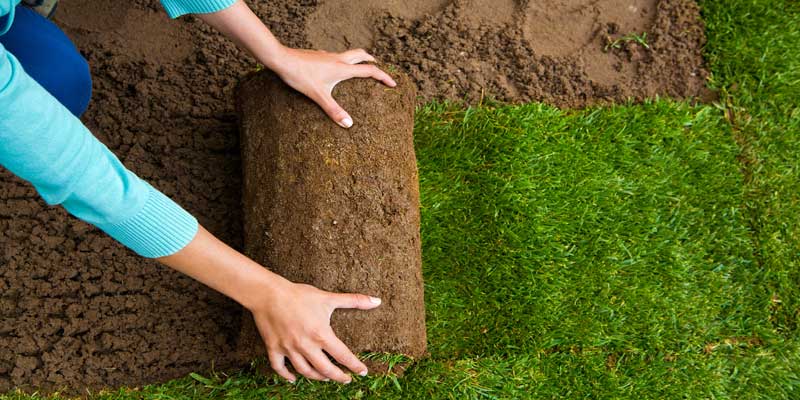
Most landscaping designs created for residential gardens have a lawn. Perhaps you have had a landscaper redesign your garden and turn it from an uninspiring area of your property into a stunning, naturally landscaped garden that is the talk of the neighbourhood. Landscaped gardens are impressive, but to keep them that way requires a fair amount of care and maintenance.
One area of landscaped gardens that requires more than its fair share of care and attention is the lawn. Apart from mowing it to stop it from overgrowing and spoiling your garden’s appearance, other tasks, such as feeding your lawn, are necessary. Unfortunately, there are some homeowners whose lawn requires more work than just routine maintenance that garden beds or garden pots require.
What we are talking about here are lawns that have specific problems, and thus remedial work to restore them is required. In most cases the problem faced will be one of the four most common that lawns suffer from. These are 1) Weeds, 2) Pests, 3) Diseases, and 4) Soil lacking nutrients. Let us take a look at each of these in more detail and how they can be remedied.
Weeds
There are some landscapers and gardeners who jokingly claim that Mother Nature was in a mood when she allowed weeds to be created, given how much harm they do and how much work they generate. Weeds invade lawns, just as they do flowerbeds and shrubberies, and cause the grass to have to compete for water, sunlight, and nutrients.
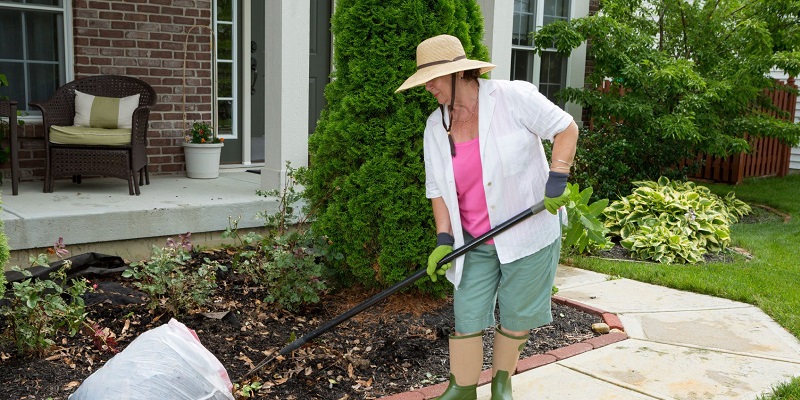
There are many professions, pastimes, and hobbies where the tools and equipment used are as important as any skill or passion one has for them. This is particularly true of landscaping, where there are a number of tasks that would literally be impossible if it were not for the tools that are used to carry them out.
For those of you who might be new to landscaping, or if you simply want to make sure that you have all the recommended tools by professional landscapers needed for landscaping, here is a list of the 10 landscaping tools you should have.
#1 Wheelbarrow: Whether you are old or young, fit or have a body that seems to ache more and more these days, a wheelbarrow will be an essential aid for landscaping, especially when you need to move larger and heavier items from one part of your garden to another, including, ironically, your other tools.
#2 Digging Spade: Spades can come in several forms, but one which is going to be most helpful with regards to landscaping will be your digging spade. These are rectangular in shape, and the flat front edge is ideal for pushing deep into the soil if you can, try to find one which is made from stainless steel.
#3 Secateurs: As any gardener worth their salt will tell you, pruning back bushes, flowers, and shrubs that are overgrown or have an area that is dead and needs removing is an essential part of landscaping. Apart from keeping your garden tidy, it also allows these plants to grow afresh.
#4 Trowel: Getting down on your knees when you want to plant new ones will require you to dig and clear some soil for each seedling, seed, or bulb, and to do that, you will want a quality trowel to dig the necessary planting holes.
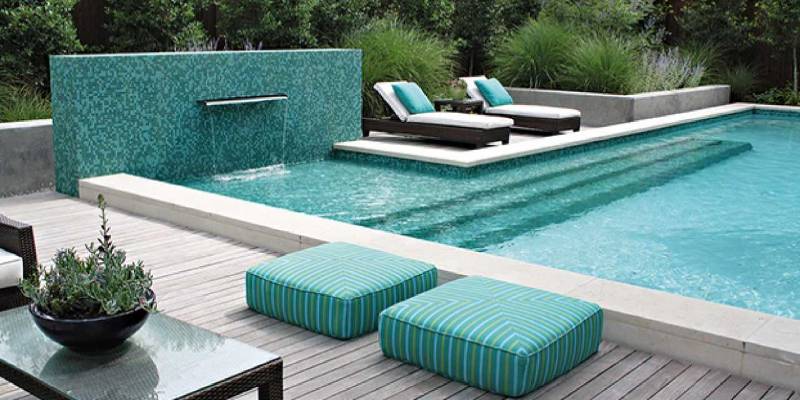
If you’re thinking about re-developing your gardens and other outdoor areas, landscaping and garden pots are a great idea. However, it’s also worth thinking about adding a swimming pool. Although they might seem like a lot of work, pools are absolutely worth it in our opinion – especially if you live in one of Australia’s hotter cities.
However, it’s a great idea to speak with a professional swimming pool designer or landscaper, which you could find on Landscape Association before you commit to building a pool. There are numerous design considerations you have to work through before you come up with your final product, and it’s important to make sure you don’t neglect any of these.
Because of this, we’ve put together the following list of things to think about when you’re designing your new pool.
- Its Size
Although this might seem quite self-explanatory, it’s actually not. There is a wide range of things to keep in mind here, otherwise you will almost certainly run into problems.
- The size of your backyard. You obviously don’t want to build a pool that takes up your whole yard. Or maybe you do, whatever, but make sure this is at the front of your mind.
- What you’re planning on using it for? If you want to be able to swim laps in the morning before work, you will obviously need a much longer pool than if you just want somewhere to relax in the evening with a drink.
- Where you want to put it. Again, this is quite obvious, but you need to ensure your pool, along with any paths, fences and garden beds, fit where you want it to go.
Once you’ve decided how big your pool is going to be, you can move on to the next step.
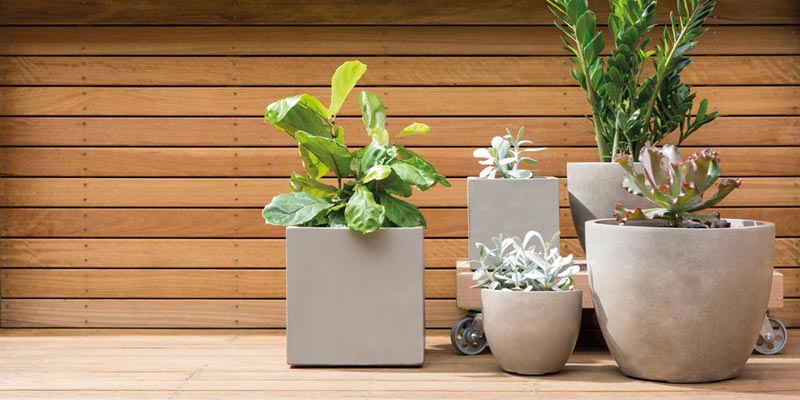
Having pot plants in your home is not a new phenomenon. The concept has been around since time began, with the Greeks livening up their palaces with garden pots and Victorians having a love affair with potted ferns.
There has never been a time when plants were not welcome inside. But within reason, of course. While the number of plants has lessened as we move from potted plant paradises to concrete jungles, there are still many reasons to keep the trend for indoor plants alive. They have too many benefits to leave behind. Here are a few of the many standout ones below.
They Help Us to Breathe
This benefit of buying garden pots for new plants is possibly one of the most important, for plants help us to breathe. When you inhale, you take oxygen into your body. When you exhale, you release carbon dioxide. Plants do the opposite. They will inhale your carbon dioxide during the photosynthesis process, and then release oxygen.
Some plants will release carbon dioxide during the night when their photosynthesis process stops, but plants such as orchids and succulents keep producing oxygen in your home for your benefit.
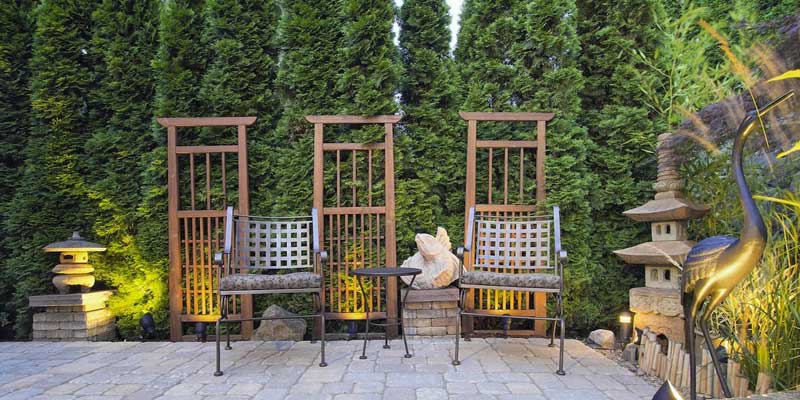
With over 24 million people in Australia, it’s highly likely you will find yourself with neighbours. And that’s whether you want them there or not. If you’re a farmer, then you’ve got privacy galore. However, if you’re a city or suburb-dweller, then you don’t have that luxury. Instead, you have to look at your landscape design options to create a sense of it instead.
If moving to greener pastures is not an option, then consider these landscaping tips for creating your serene slice of paradise among the densely populated suburbs.
- Evergreen Hedges
If you don’t need a fence, or the price tag puts it out of your league, then consider an evergreen hedge. Use privet hedges or shrubs to offer a sense of privacy as well as shelter. A privet hedge can be quite high-maintenance with how much trimming it requires, so you may prefer shrubs. Visit your local landscaping expert for advice on the best plants to use for privacy hedges.
- Lattice Screens
Whether you want privacy on your porch or semi-private walls around your yard, lattice screens can help. You can either use them as a form of temporary fencing or as a foundation for climbing plants to grow on. If you add climbing plants, it won’t be long until the lattice screen is a beautiful mixture of greenery and wood.
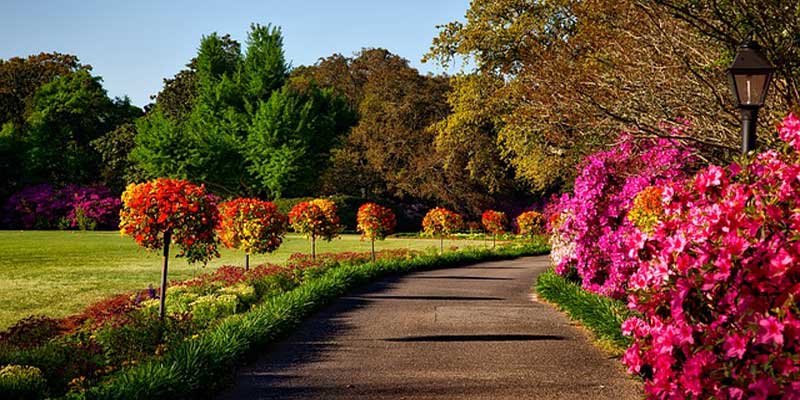
When it comes to sustainable landscape design, there are three main things that you should think about – reducing energy use, reducing water consumption, and preventing the introduction of harmful chemicals into the environment. While many people choose to use experienced landscape designers to help them develop a sustainable garden and outdoor living space, there is no reason why you can’t do it yourself.
Keep in mind that you will need to dedicate a significant amount of time and effort to your garden design if you decide to do it yourself, but you will definitely find it rewarding and worth it if you enjoy spending time outside. The following guidelines should help you develop the perfect sustainable yard:
Reduce your water consumption:
Although it may seem difficult at first, it is actually extremely simple to reduce your garden’s water consumption. Just because you don’t want to water it anymore doesn’t mean that your garden has to be dead and dry looking – in fact, with a few informed choices, just the opposite is true.
The first thing that you should do is choose plants that are suited to your environment. As most of Australia is hot and dry, most of these will be native plants of some description. Things like eucalypts and bottlebrushes are very popular in home gardens and should definitely be at the top of your list.
At the same time, you want to eliminate any practices which waste water. This includes things like sprinklers that aren’t well positioned, and water features that encourage evaporation, and the watering of large lawns. If you find yourself wasting a lot of water on your lawn, then you have two options – you can either replace it with a synthetic lawn, or you can water it using greywater from your washing machine or shower.
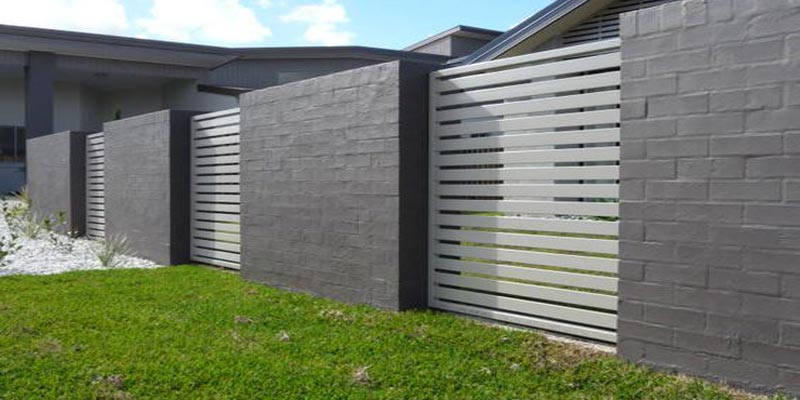
When choosing a fence, a lot will depend on what you want that fence to do for you. Fences can be built for privacy, security, decoration, safety, boundary marker and a fence to contain kids and pets.
Once you have made up your mind, then selection gets a little easier.
Privacy – tall, no gaps, durable and cost effective. You will find that a timber fence covers all those requirements fairly well. Look for a panel fence, easy to install and not too hard on the pocket, and decide on the height.
Security – height, structural strength and suitable material. Perhaps a mesh fence mounted on steel posts at heights of 2 metres to 3 metres will do the job.
These types of fences are okay for a business but don’t look so good around your home, giving it the look of a prison. If you are really into keeping your home secure, then a very tall timber fence that hides your property and prevents intruders from climbing it might be the solution. Another solution is brick pillars with a lower brick wall between, and then steel or aluminium posts or spears to a height of over two metres that look good as well as being a deterrent for would be thieves or intruders.

In an age where technology is the rage, one of the simpler products is rolling on the lawn. But there is quite a bit of dedication and hard work that goes into producing a piece of roll-on lawn. If you like to learn how things are done, and to understand new things, visiting a turf farm might turn out to be an educational and enjoyable experience.
Types of Turf
Most of the turf farms in Western Australia grow quite a few different varieties of grass to suit the individual needs of both the people working in the landscaping business and the homeowner. Grass types like Matilda Soft Buffalo or Kikuyu can deliver results good enough to make even a fussy landscaper happy. Turf farms realise that variety is the key to making all their customers happy.
How is it Done?
The question is: how do turf farms make it all happen? Well, it’s not rocket science in its complexity but there are a few necessary steps. Not surprisingly, by mixing grass seeds and water and providing a lot of attention and love, the result is a satisfying product. By nurturing these different varieties of grass for one to three years, some specialised tools are then used to harvest the turf so that there is no damage to the root system. This is done by using a sharp blade, inserted below the roots so that a roll of lawn can be lifted.
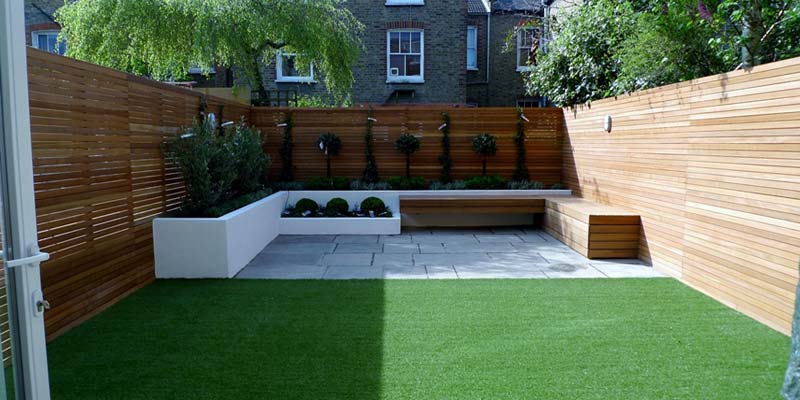
Landscaping will make your property look amazing and add value to your home. But it can cost a lot in terms of both finances and using up the earth’s resources. If you are into sustainability and want to be as eco friendly as possible with your garden design, here are some tips to help you.
- Choose low maintenance plants. These are plants that don’t need a lot of water and that are also hardy when it comes to frosts, droughts, and hot weather. With a low maintenance garden, you won’t have to use up the earth’s water supply or watch your precious plants droop and die. It’s also a lot easy on you physically, as such plants are perennials that don’t need replacing every season.
- Use a lot of organic mulch. This can prevent the garden soil from drying out and keep plant roots cool, which they love. Organic mulch comes from something that was once a plant, not from pebbles or rocks. Grass, leaves, straw, and even wood chips are organic mulch.
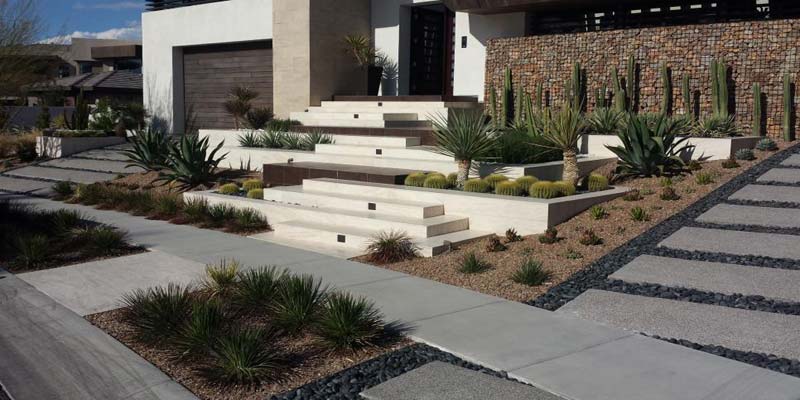
According to Lone Pine Landscapes traditional landscaping construction trends have not always been eco-friendly. For instance, lovely swathes of green lawns not only take a great deal of water to keep in shape, but it also takes a lot of fertilizer and in some cases pesticide to prevent insects from ruining the lawn. In addition, many of our gardening techniques and even some of the traditional plants are derived from Britain, where there is rarely a shortage of water; more like the opposite.
In Australia, the climate is hot and dry for the most part and so those landscaping techniques that require a lot of water are not suitable for our environment. Here are some eco-friendly trends to follow for those who want to add to the environment rather than take from it.
- Look for a landscaping company that follows sustainable practices. They should replace poor soil with quality soil so your plants grow better without the need for chemical fertilizers that tend to push plants into making sappy growth that insect pests love and gardeners spray with pesticides, another poison.
- Adding lots of organic matter to the soil not only gives plants essential and natural nutrients but also keeps weeds at bay and helps retain moisture. That’s three ticks for sustainability.
